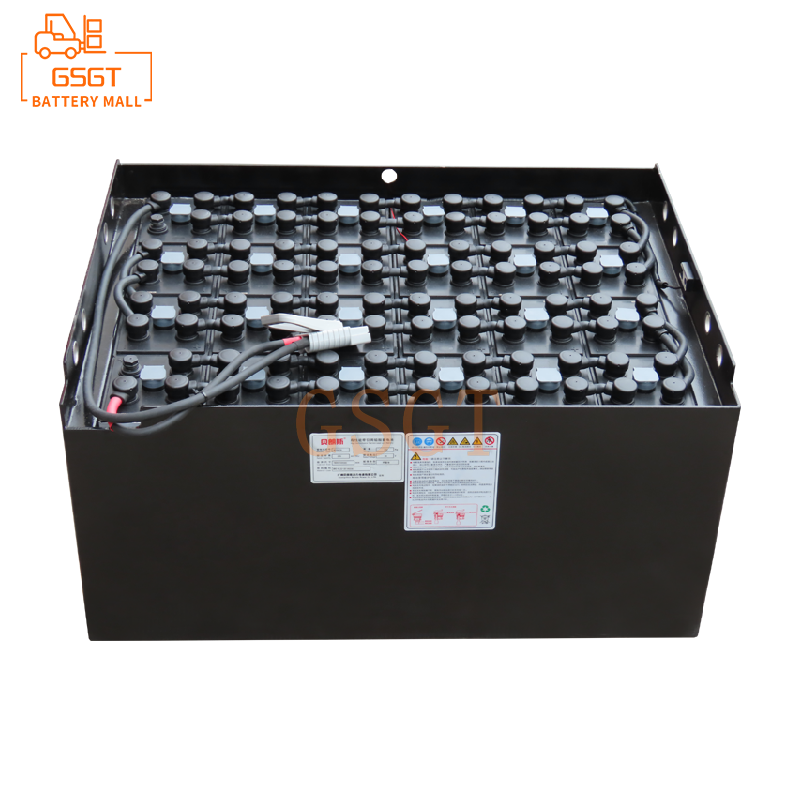Time:2025-07-15 09:59:33
Browse:621
In the daily use of forklifts, lead-acid batteries are an indispensable source of power. Many forklift users have such concerns: How should lead-acid batteries be stored when forklifts are idle for a long time? There is concern that long-term storage may cause damage to the battery, affecting its service life and performance. In fact, as long as the correct storage method is mastered, the long-term storage of forklift lead-acid batteries is not terrifying. Now, let's take a detailed look at the correct storage method for lead-acid batteries in forklifts.
1. What preparations need to be made for a battery before long-term storage?
Before long-term storage of forklift lead-acid batteries, making adequate preparations is the key to ensuring the battery's stable condition during storage.
First of all, a full charge of the battery is required. Lead-acid batteries should be kept fully charged when stored. If the charge is insufficient, sulfation is likely to occur, causing damage to the plates. When charging, it is necessary to follow the requirements of the battery user manual. Generally speaking, the battery should be charged to about 80% of its capacity. This is because storing it fully charged may cause the active substances inside the battery to fall off, while too low a charge is prone to sulfation.
Secondly, the appearance of the battery needs to be cleaned. Use a clean cloth dipped in an appropriate amount of distilled water or a special cleaner to wipe the battery casing, electrodes and other parts, ensuring that the surface is free of dust, oil stains and other impurities. This not only prevents impurities from corroding the battery casing, but also avoids problems such as short circuits caused by impurities during storage.
In addition, the electrolyte level of the battery should be checked. If the liquid level is lower than the specified standard, distilled water should be added to the normal liquid level. Note that tap water or electrolyte should not be added to avoid affecting the battery performance. At the same time, carefully inspect the battery casing for any damage, leakage or other conditions. If there are any problems, they should be repaired or replaced in a timely manner to ensure that the battery enters the storage stage in good condition.
2. What are the environmental requirements for long-term storage of lead-acid batteries in forklifts?
A suitable storage environment can effectively reduce the wear and tear of batteries during long-term storage. The specific requirements are as follows
In terms of temperature, the ideal storage temperature is around 25℃. Excessively high temperatures will accelerate the chemical reactions inside the battery, causing the self-discharge rate to increase and shortening the battery's service life. If the temperature is too low, it may cause the electrolyte to freeze, damaging the battery plates and casing. Therefore, batteries should be stored in an environment with relatively stable temperatures, avoiding direct sunlight and proximity to heat sources such as heaters and stoves.
In terms of humidity, the relative humidity of the storage environment should be maintained between 40% and 60%. Excessive humidity can easily cause rust on the battery surface, affecting the conductivity of the electrodes. Low humidity can cause the battery casing to dry out and crack. The environmental humidity can be adjusted by placing a dehumidifier or desiccant to ensure that the battery is in an appropriate humidity condition.
In addition, the storage location should be kept clean and well-ventilated to prevent dust, corrosive gases, etc. from causing damage to the battery. The battery should be placed on a stable ground to avoid tilting or being subjected to vibration. At the same time, batteries should be stored separately from metal items to prevent short circuits.
3. What should be noted when reusing forklift lead-acid batteries after long-term storage?
After long-term storage, making relevant preparations before reusing the storage battery can ensure its normal performance.
First of all, a visual inspection of the battery should be carried out to check if the casing is damaged or leaking, and if the electrodes are rusted, etc. If there is rust, gently sand the electrode surface with fine sandpaper to remove the rust, and then apply a layer of vaseline to prevent re-rusting.
Secondly, check the electrolyte level. If the level is lower than the standard, add distilled water to the normal position. Then perform the charging operation. When charging, use a dedicated charger and follow the specified charging parameters to avoid overcharging or undercharging. During the charging process, closely monitor the temperature and voltage changes of the battery. If any abnormality is detected, stop charging immediately.
After charging is complete, do not put it into use immediately. Instead, conduct a discharge test to check if the battery capacity meets the requirements. The battery can be installed on the forklift for short-term operation to observe the running status of the forklift and the discharge of the battery. If the discharge is normal, charge it again to ensure that the battery is in the best condition.
In addition, during the first few uses after reusing, pay attention to observing the performance changes of the battery, such as charging time and discharging duration, and promptly identify and solve any possible problems. At the same time, maintain the battery in accordance with the normal maintenance and care procedures to extend its service life.
In conclusion, the long-term storage of lead-acid batteries for forklifts is not terrifying. As long as proper preparations are made before storage, a suitable storage environment is provided, and correct handling is carried out before reuse, battery wear and tear can be effectively reduced, ensuring that its performance is not greatly affected. Mastering these correct storage methods can ensure that the lead-acid batteries of forklifts can still provide reliable power support for forklifts after long-term storage.

$1060

$3050

$5710

$1690

MESSAGE
Professional And Efficient
Security
Affordable Price
Professional Services